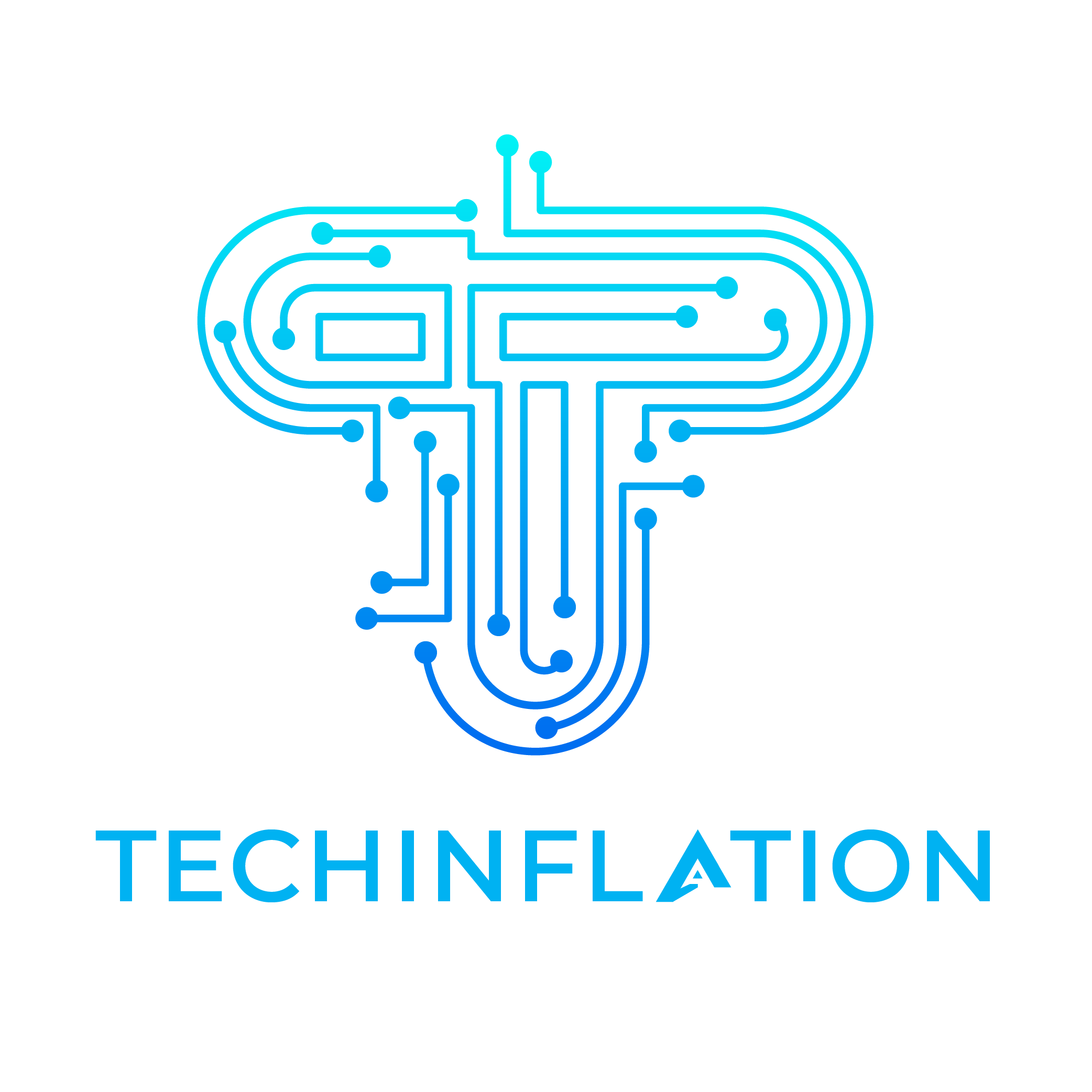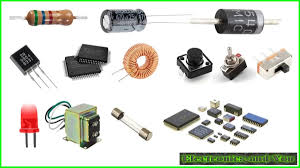Introduction
Nowadays, electronics is a constantly developing field and to work with circuits and devices involving them, it is essential to comprehend the diverse parts that are their foundation. Therefore, as the industry trends toward making the actual construction of the hardware as polymorphic as software creation, a holistic understanding of these fundamental components is as critical. This blog post will work to further discuss the primary types of electronic components and their uses among today’s electronics. Through an analysis of these basic components, one is able to understand the sophistication that goes into the development of these gadgets that define modern society.
Resistors
- Resistors may be considered as the simplest passive components in any circuit. They resist the flow of electric current and enable the regulation of voltage as well as currents in a circuit.
- Key aspects of resistors include:
- Function: Resistors reduce the amount of current allowed to pass through the circuits and also divide voltage.
- Types: These are the fixed resistors and the variable resistors also known as potentiometers and other special resistors such as thermistors and photo resistors.
- Applications: There are voltage division, current limiting, and signal conditioning.
- Measurement: Measuring unit used for resistance is ohms [Ω].
Capacitors
- Capacitors are passive components that have the ability to collect and discharge electrical energy. They are made up of a system in which there are two conducting faces that are parallel to each other, with an insulating substance in between famously referred to as a dielectric.
- Important points about capacitors:
- Function: These are electrical components that hold charges and voltage domestically and block direct current while letting in an alternating current.
- Types: Ceramic automobile electrolytic film and variable metal dielectric film capacitors.
- Applications: A few of them are filtering, smoothing power supplies, coupling and decoupling circuits and timing circuits.
- Measurement: Capacitance like resistance has units and its unit of measure is the farad (F).
Inductors
- Inductors are also the passive elements, in which an energy is accumulated in the magnetic field if current passes through it. They do not favour changes in the flow of current.
- Key features of inductors:
- Function: Inductors are against changes in current and can also hold energy in its magnetic field.
- Types: It was identified that there are three major categories of inductors namely air-core inductor, iron-core inductor and ferrite-core inductor.
- Applications: Thus the common filter section, oscillators, and power supplies.
- Measurement: Hence, inductance is defined with reference to the unit called henries (H).
Diodes
- A diode is a semiconductor device that will permit the passage of a current in one particular direction only if the current is too small.
- Essential aspects of diodes:
- Function: Correction of the signal baseband and voltage stabilisation.
- Types: Power rectifier diodes, voltage reference diodes, Zener diodes, infrared and visible LEDs, photodiodes.
- Applications: It also includes rectification and voltage regulation which are processes of converting AC into DC, and then protecting the voltage, and emission or detection of light respectively.
- Characteristics: All potential combinations of the forward voltage drop and the reverse breakdown voltage
Transistors
- Transistors are preferably categorised as energetic semiconductor components which are capable of boosting or changing digital signals. It is regarded as the basis for the most current digital electronics.
- Key aspects if transistors are:
- Function: Amplification, signal switching as well as signal processing are some of the reasons.
- Types: BJTs and FET are two major types of transistors that are commonly used in modern day electronics and communication technologies.
- Applications: These are the amps, oscillators, switches, and gates among others.
- Characteristics: Capacity, current, and timing wheel are the key factors that must be obtained, current, and fast to switch.
Printed circuit boards
- Printed circuit boards are packages of circuits and components in which several transistors, resistors, capacitors and other components are installed in one semiconductor chip.
- Features of pcb are:
- Function: Provide large levels of functionality in a small encased solution.
- Types: Certainly analog ICs, digital ICs as well as the mixed-signal ICs.
- Applications: Microprocessors, memory chips, op-amps and other microfunctions.
- Advantages: These are miniaturisation of components; increase in the functionality, and reliability of the circuit.
Microcontrollers
- Microcontrollers are comparatively small computer chips which consist of a processor, ROM and RAM, and various inputs/outputs that can be programmed.
- Key aspects of microcontrollers are:
- Function: As for the functions of embedded systems, they should allow for programmable control.
- Components: Processor, system memory read only memory (ROM), random access memory (RAM) and input/output ports.
- Applications: Electronic products for home and car use and for industrial processes.
- Advantages: Small dimension, low energy consumption, and the ability to perform many functions.
Sensors
- Sensors are subsystems of a system that recognizes any physical factors and delivers an electrical response in order to flow with the physical environment.
- Features of sensors are
- Function: Amplify the readings originating from the physical quantities.
- Types: Temperature sensors, pressure sensor, acceleration sensors and photoelectric sensors.
- Applications: Control and monitoring of environment, industrial automation and home automation.
- Characteristics: This is because a large number of resources insist on these three attributes when searching for information: sensitivity to the necessary information, an ability to accurately find it, and speed of response.
Interconnects
- Interconnects, on the other hand, help to enable connections between the electronic parts and subassemblies, hence providing electrical connections.
- Some aspects of interconnects are:
- Function: Provide for easy wiring of components or subassemblies as per the requirements of the overall system design.
- Types: Connector strips/blocks/headers and specific connectors such as USB, HDMI and the like.
- Considerations: These are contact resistance, current carrying capacity and the ability to protect from environmental influences.
- Applications: The board-to-board connections, cable assembly connections, and user or operator accessible jacks.
Switches
- Switches are devices that are employed to interrupt or close the electrical circuit so as to facilitate the making of decisions and inputs on the operational procedures of the circuit.
- Key aspects of switches are:
- Function: Electrical connections or disconnection; The creation of novel circuits or even the destruction of the existing circuits.
- Types: Toggle, push button, rotary, and electronic types of the switch are also present.
- Applications: Display devices, management of power supply, and safety features of the circuits.
- Characteristics: Contact rating signals the amount of force that can be transmitted through the snap-in hinge while the actuation force is the force needed to open or close the snap-in hinge and lifespan relates to how long the snap-in hinge is expected to last
Displays
- An output device that has the ability to deliver information generated electronically for the purpose of sharing it with users is called a display.
- Key features of displays are:
- Function: Translate them back into a form visible to the human senses.
- Types: LCD, LED display, OLED display and e-paper display.
- Applications: Computer terminals, online service providers, information appliances and gadgets, and media and entertainment instruments.
- Characteristics: They include: a resolution, colour depth, refresh rate, and power consumption.
Power Supply Components
- Voltage and current sources are critical components in power supply since they impose the correct voltage and current levels on the circuits.
- Key aspects of power supply components are:
- Function: Modify and control the electrical power to be utilised in operation of electronic circuits.
- Types: Current transformers , AC & DC Voltage Regulators, Rectifiers and Batteries.
- Applications: Power Converters which may include AC-DC, voltage regulation and portable power supply.
Crystal Oscillators
- Crystals oscillators are used to generate accurate time signals for the circuits and operate through the principles of vibration of a crystal.
- Features of crystals oscillator are:
- Function: Produce accurate high frequency stable waveforms for timing and synchronisation.
- Types: Lower tier SAWs and quartz oscillators: BCOs, TCXOs, and OCXOs.
- Applications: Frequency generation for digital systems, radio frequency generation and time keeping.
- Characteristics: Unmodulated signal stability, phase and frequency deviation, and temperature variations.
- Considerations: First of all, efficiency, which is the ability to work with the least amount of waste heat; second, heat dissipation, or the elimination of waste heat; and, third, output stability, or the ability of a power system to deliver a consistently constant amount of electric power.
Antennas
- These are structures that are employed in transmitting and also in receiving electromagnetic signals to and from stations in a wireless system.
- Key features of antennas:
- Function: Amplify and demodulate electrical signals to turn them into electromagnetic waves and vice versa.
- Types: Dipole, patch, Yagi and parabolic antennas.
- Applications: Mobile communication by point-to-point links, cellular, mobile communication networks, satellite communication and earth station.
- Characteristics: These are gain, directivity, bandwidth and polarisation.
Conclusion
Anyone, who is working or planning to work in the electronics design or manufacturing field or in any related repair industry, must have a grasp of these various types of the electronic component. Amid the further growth of this domain, key tendencies like miniaturisation, integration, and software-based manufacturing, it is still vital to understand these essentials. With this knowledge, engineers and designers are able to improve on the efficiency of the electronic systems as well as their reliability and even come up with systems that can for instance, improve the technological potential in the society.
Altogether, the interaction of these elements produces the foundation of all electrical equipment in various levels of complexity from a basic circuit to an intricate system. Thus, as the electronics industry is moving toward making electronic development as quick and modular as software development, the possibilities to make quick decisions on the choice of these components, their interconnection and optimization are of critical importance. Such knowledge enables those who invent new products and services to develop advanced ideas that help people overcome the issues that arise in an interconnected and digital environment.










